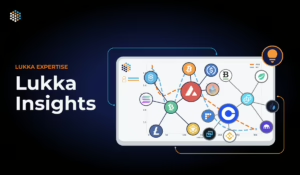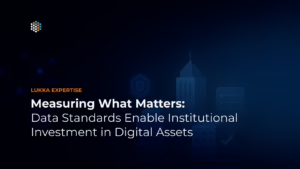Authors: Mark Leed and Brennan Young
The statements in this document reflect guidance issued as of January 9, 2020.
This White Paper is presented for general information only. It may not be relied upon as legal or tax advice. Interested persons should contact their own tax advisors with respect to how the matters covered herein should apply to their own situations.
The United States Internal Revenue Service (the “IRS”) has not produced much in the way of guidance for the taxation of cryptocurrency since 2014. That guidance was published in the Internal Revenue Bulletin on April 14, 2014. Back then, a Bitcoin could be purchased for around five hundred dollars, and Ethereum wasn’t even around! Suffice to say, much has transpired in the world of crypto since that guidance was published. In mid-2019, the IRS ended this relative drought, publishing Revenue Ruling 2019-24 (the “Revenue Ruling”1) providing guidance on particular situations involving hard forks, and a list responding to frequently asked questions on virtual currency transactions (the “FAQs”).2
In this White Paper, we provide some background on cryptocurrency forks and provide an overview of the guidance included in the Revenue Ruling.
I. Background
A hard fork is when a single cryptocurrency splits in two. It occurs when a cryptocurrency’s existing code is changed, resulting in both an old and new version.3 A soft fork occurs when the two versions of the software are meant to be compatible. A hard fork occurs when the two versions of the software are meant to be incompatible.
The two different forks each create two different versions of the software (and therefore two different versions of the blockchain and two different versions of the coin or token). Cyrptocurrencyfacts.com explains that SegWit is an example of a Bitcoin soft fork meant to create two compatible versions of the software that share a single asset. Both SegWit and non SegWit software use the same exact Bitcoin. The SegWit blockchain follows non-SegWit rules, and thus the non-SegWit software recognizes transactions done with SegWit activated software. SegWit is backwards compatible.
Cryptocurrencyfacts.com further explains that Bitcoin Cash is the result of a Bitcoin hard fork in 2017 that created two different assets with value. After the fork occurred, Bitcoin Cash and Bitcoin became two totally different cryptocurrencies from the activation block forward. You can’t send Bitcoin Cash to the Bitcoin Blockchain or vice versa, because the chains are not compatible.
The Bitcoin Cash hard fork is also an example of a hard fork with an airdrop. An airdrop is a means of distributing units of a cryptocurrency to the distributed ledger addresses of multiple taxpayers. A hard fork followed by an airdrop results in the distribution of units of the new cryptocurrency to addresses containing the legacy cryptocurrency.
A hard fork is not always necessarily followed by an airdrop, because not every hard fork is meant to create a new coin with value. Cryptocurrencyfacts.com explains that Ethereum’s Byzantium hard fork is an example of a hard fork meant to create two incompatible blockchains, but only one token with value. Byzantium was a mandatory upgrade to the Ethereum software. The old Byzantium software (the old blockchain and the token on it) was not meant to be used after the activation block. After Byzantium, there was still only one Ethereum.
II. The IRS Guidance
IRS Revenue Ruling 2019-24 addresses two situations. First is a situation where a taxpayer owns units of Coin A, where Coin A experiences a hard fork creating Coin B, but the taxpayer owning Coin A does not receive any units of Coin B as a result of the hard fork (“Situation 1”). Second is a situation where a taxpayer owns units of Coin A where Coin A experiences a hard fork creating Coin B, but in connection with the hard fork, the taxpayer receives units of Coin B in an airdrop (“Situation 2”).
The Revenue Ruling states that in Situation 1, since the taxpayer does not receive any units of Coin B as a result of the hard fork, the taxpayer does not have an accession to wealth, and therefore does not recognize gross income under Code § 61. This is good news.
In contrast, the Revenue Ruling holds that in Situation 2, since the taxpayer receives units of Coin B in the airdrop following the hard fork, the taxpayer does have an accession to wealth and has ordinary income in the taxable year in which the units of Coin B are received. The amount included in gross income as ordinary income is the fair market value of the units of Coin B received.
A sale of cryptocurrency is treated as a capital gain generally eligible for preferential long-term capital gain tax rates (currently, 20% for noncorporate taxpayers) when a taxpayer’s holding period for the cryptocurrency is more than a year, but other income from owning cryptocurrency (such as the receipt of a new currency after an airdrop) is not eligible for long-term capital gain tax rates. Currently, the maximum tax rate on ordinary income is 37%.4
It should be noted that a taxpayer does not recognize income until the taxpayer has complete dominion and control of the new cryptocurrency delivered in an airdrop. For example, suppose on December 31, 2019, following a hard fork a cryptocurrency airdrops five coins of a new cryptocurrency to all holders. Further, assume that a taxpayer is entitled to receive the five coins on December 31, 2019, but the taxpayer’s cryptocurrency wallet does not recognize the new coin until January 5, 2020. In this example, per the Revenue Ruling, since the taxpayer does not have control over the new coins until January 5, 2020, the taxpayer has no taxable income to include as a result of the airdrop on her 2019 federal tax return, but instead recognizes that income on her 2020 return.
No specific guidance was provided with respect to the Bitcoin hard fork and airdrop of Bitcoin Cash mentioned above, which affected any taxpayer holding Bitcoin at the time. Taxpayers should contact their tax advisors to determine whether their tax reporting of such event was consistent with the IRS guidance.
Finally, one uncertainty raised by the Revenue Ruling is that in some cases, a taxpayer must take some affirmative steps in order to obtain a new cryptocurrency following a hard fork and airdrop, such as downloading new software in order to transfer the new cryptocurrency out. Ronald Goldstein, branch 4 senior technician reviewer, IRS Office of Associate Chief Counsel (Income Tax and Accounting) publicly stated that the IRS has considered the application of constructive receipt in those situations. Specifically, Mr. Goldstein expressed the view that where a taxpayer must take a mere ministerial action to accept the new cryptocurrency, the taxpayer cannot decline to accept it (and thereby avoid the recognition of income).4 These public statements are not statements of official IRS positions. If the action is not viewed as ministerial, however, taxpayers may have a position that income is avoided until the action is taken.
For more information on the issues covered by this White Paper, please contact Mayer Brown LLP. https://www.mayerbrown.com/en/locations/new-york?tab=overview
1 The Revenue Ruling is available at https://www.irs.gov/pub/irs-drop/n-14-21.pdf.
2 The FAQs are available at https://www.irs.gov/individuals/international-taxpayers/frequently-asked-questions-on virtual-currency-transactions. A discussion of the FAQs is beyond the scope of this White Paper.
3 The crytocurrencyfacts.com explanation of cryptocurrency forks is available at https://cryptocurrencyfacts.com/understanding-hard-forks-cryptocurrency/.
4 Both rates can be increased by 3.8% if social security taxes apply.
5 See Nathan J. Richman, IRS Confirms Cryptocurrency Like-Kind Exchange Depends on the Facts, 2019 Tax Notes
Today Federal 223-4 (November 18, 2019).



